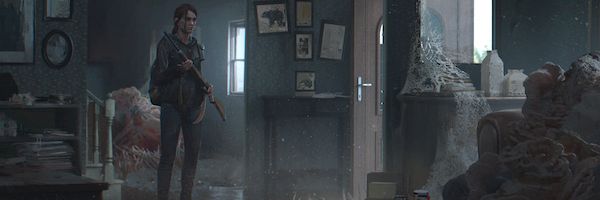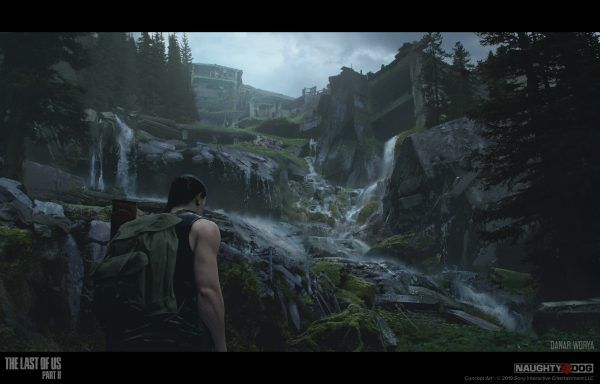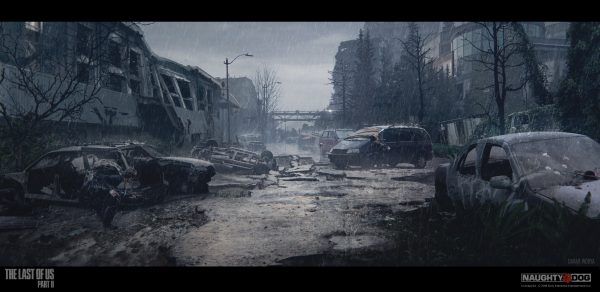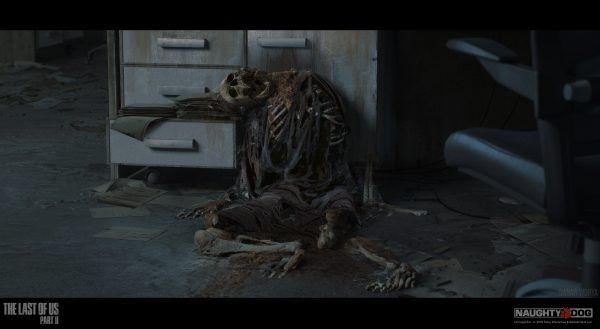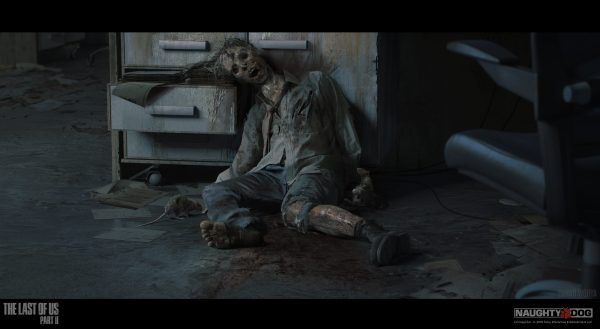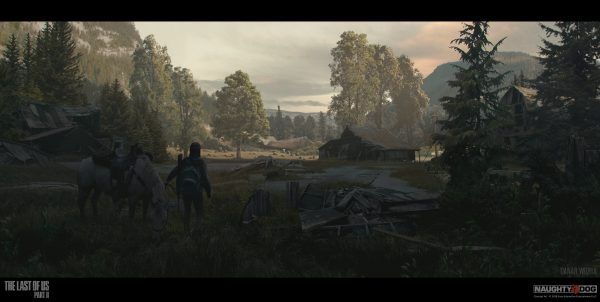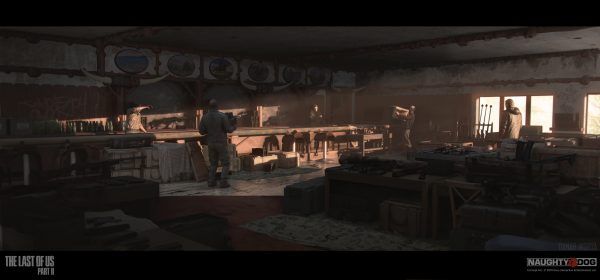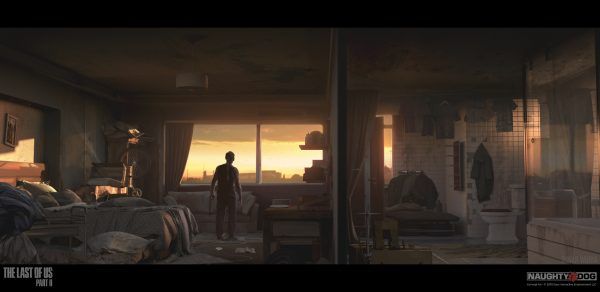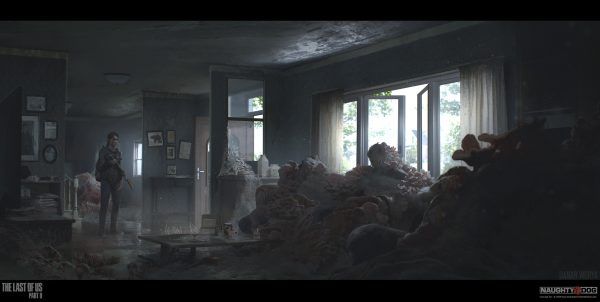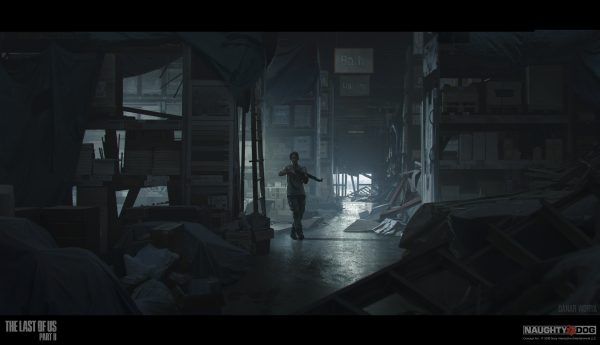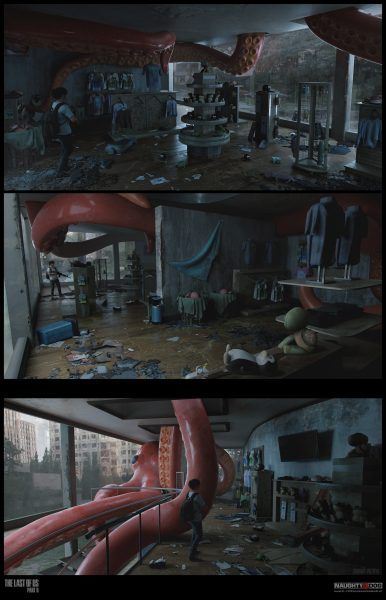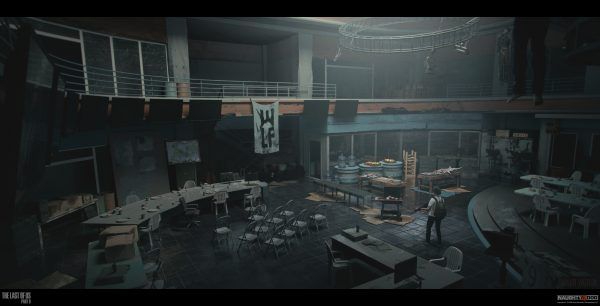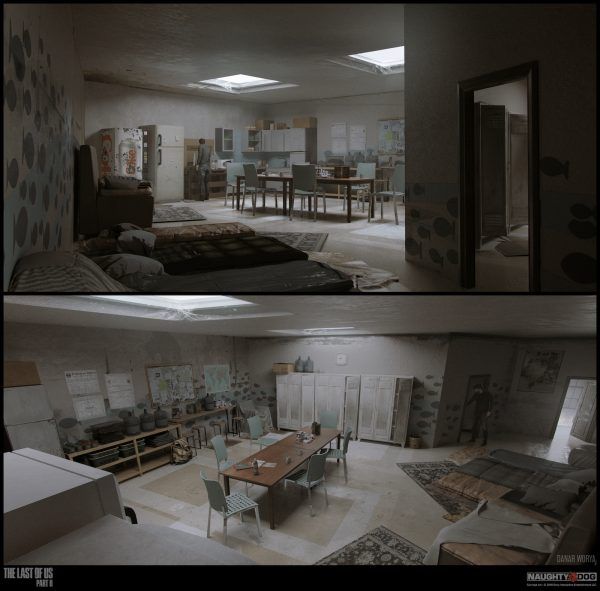The Last of Us: Part II will go down in history as one of the most anticipated (and divisive) video games in history. We've written about all the reasons why, and rather extensively at that, but it's important to remember that the Naughty Dog production is first and foremost a team effort. All of its successes and missteps, they're all a result of the hundreds and thousands of people who came together over the better part of the last decade to pull off the incredible feat.
One of those team members, concept artist Danar Worya, recently reached out to Collider to share over three years of work in collaboration with Naughty Dog and One Pixel Brush on the sequel. We're happy to share some of Worya's work with you today, along with some behind-the-scenes insight that you won't find anywhere else. (Though, you should absolutely visit Worya's ArtStation page for much more of his work on display, including a fantastic breakdown of a particular scene designed for The Last of Us: Part II.)
For example, here's what Worya had to say about the sequel's world, one that was intentionally more fleshed-out (in every sense) than the original:
"We were asked to focus on [getting] the nitty gritty aspects such as how the flesh, bone, and clothes degenerated."
Worya goes on to describe the attention to detail put into the design of the world, all with the idea of embedding "story elements" in every element of those designs. The result, which came about from a combination of focused art direction and artistic freedom, can be seen in Worya's work, which follows below along with some scene-specific commentary:
There are four elements I will tap into and share, importance of realism and the human aspect, the importance of your voice, how tools can serve you, and problem solving.
One approach is to make most of the images based on real locations; the tweaks are minimal. For instance, the Sniperstreet image is based on the Google Maps photos of the street. I looked at the photos and envisioned a layer of the Last Of Us destruction that would complete it. The challenge in layering this specifically for this image was the fact that I had to show that someone was sniping there.
However, the bridge was rather far away. For this reason, I could not show a character. This is where my inner gamer came alive and I recalled the Battlefield sniper zoom-in element; it always showed a small white reflection dot. This dot became the sniper and clarified the vision of the image. But then the question became ‘How do you build this? And how do you know where your audience will look at? And do they understand what you are trying to do?’
...
One key indication was given to us: [the] importance of lighting. Lighting in a scene is one of the most important aspects that Naughty Dog wants to have in their images, it is part of the overall vision. Lighting is the direction that will lead the eye. It is the finger that is pointing towards the focal point and says ‘HEY LOOK HERE!’ without using caps lock like I am doing right now. This allowed the Sniperstreet to be so fearless and enigmatic at the same time from Abby’s point of view.
The main challenge was one question I kept asking myself: How could I build the concept in such way that the 3d artist has a clear view on mood, placement of objects, and role of characters in the frame? Nobody should ever forget that this is full-on teamwork. Each element needs to have a purpose for the next step. [The] key is to not get lost in the grandiose mystery world but [to] make it relevant and relatable to all. However natural it may seem in our day-to-day lives, the human aspect and experience can be very challenging to integrate.
Even if it is about skeletons, readability of the clothes, skin, and bones, it all has to be clearly defined without the noise and all possible realistic details. That was one of the specific moments where I identified myself most in relation to this project, when we had to design the dead skeletons for our team. I got the task of how to come up with how the civilians died with another colleague, Florent Lebrun. We were asked to focus on [...] to get to the nitty gritty aspects such as how the flesh, bone, and clothes degenerated. When I got the hang of it, it showed me that when I put my mind to it, I can bring that point of view to life.
[L]et’s take the Depot Entrance image. For this image, I actually drove up to the nearest Ikea I could find, talked to their staff, and upon approval started snapping photos of their aisles where you collect the items. After this I went into 3D and see how far I can take it there.
Danar Worya works with studios Naughty Dog, Guerilla Games, Axis Studios, as well as teaching concept art courses in Paris, and giving lectures in Zagreb, Barcelona and Eindhoven. To see more of his work visit artstation.com/danarworya or follow him @danarworyaart

